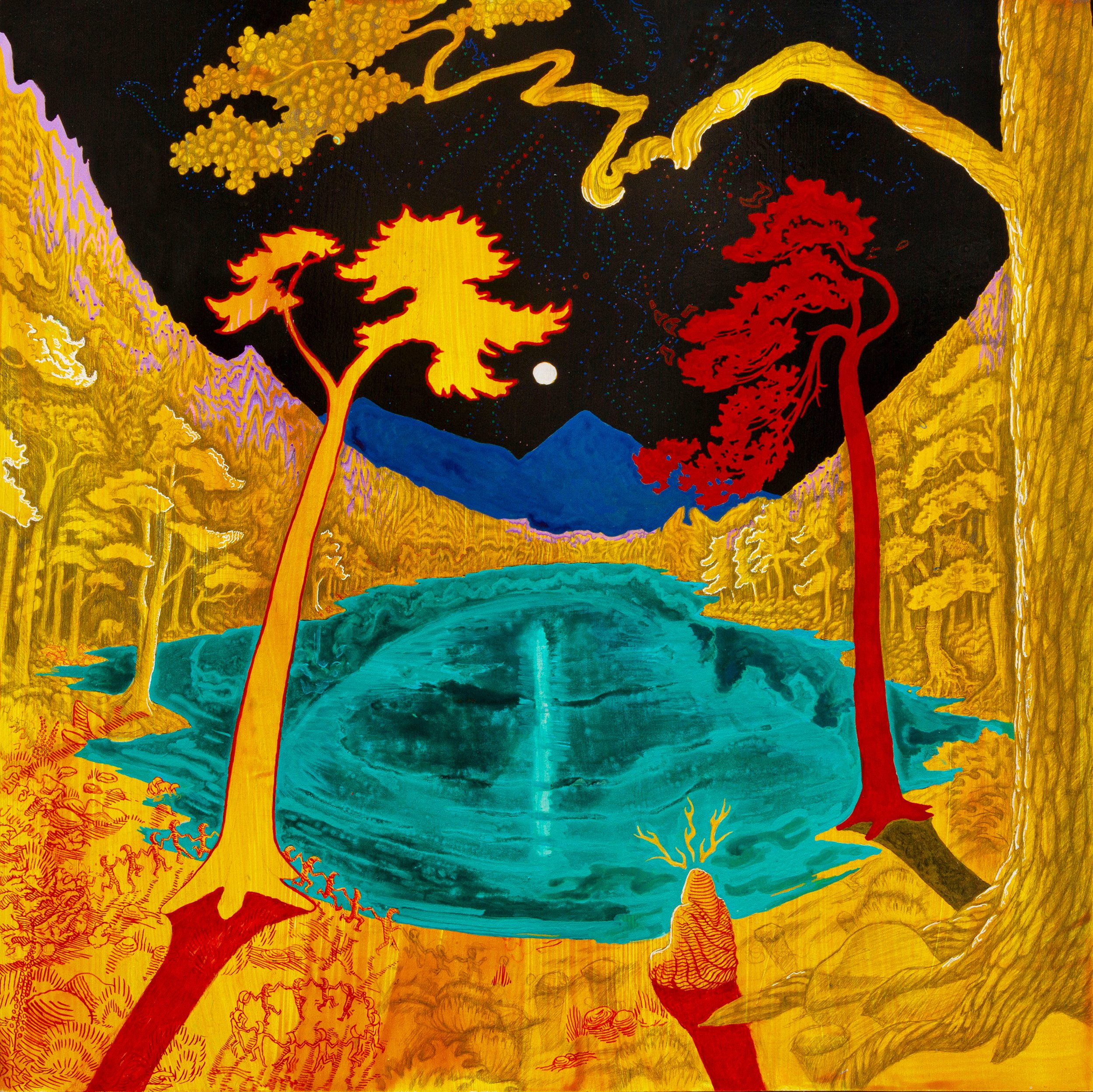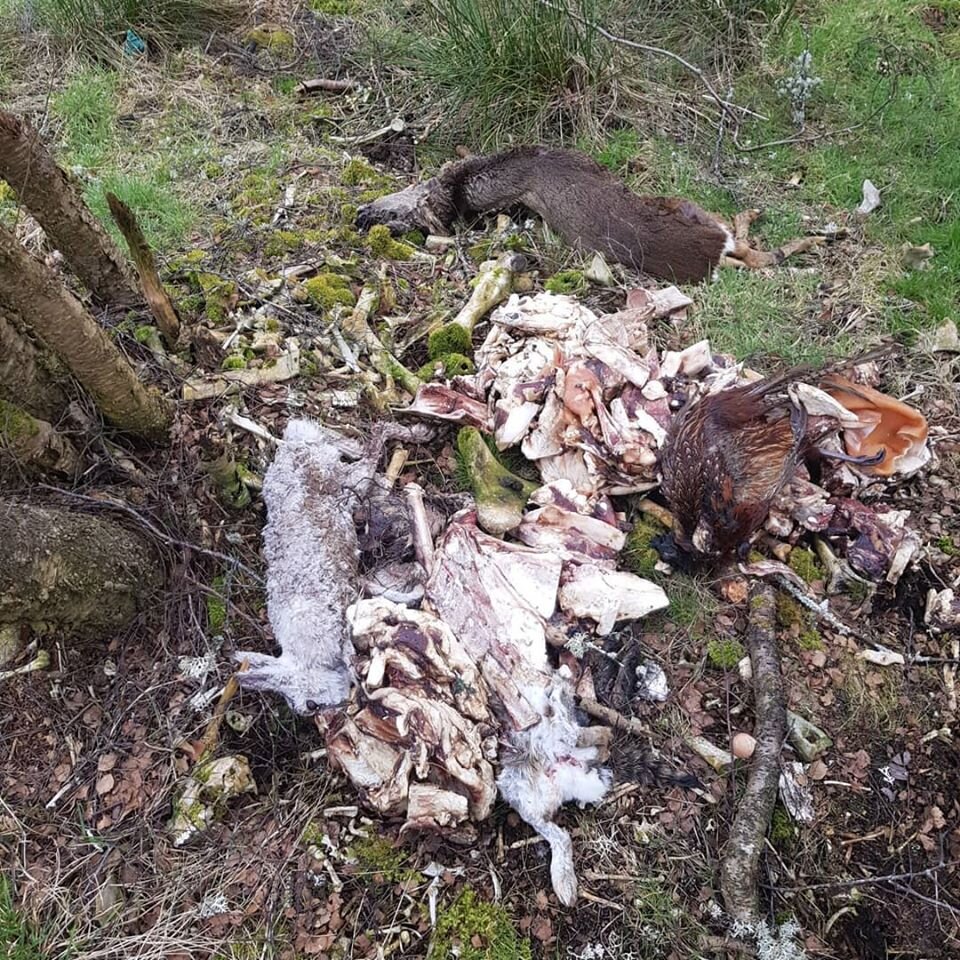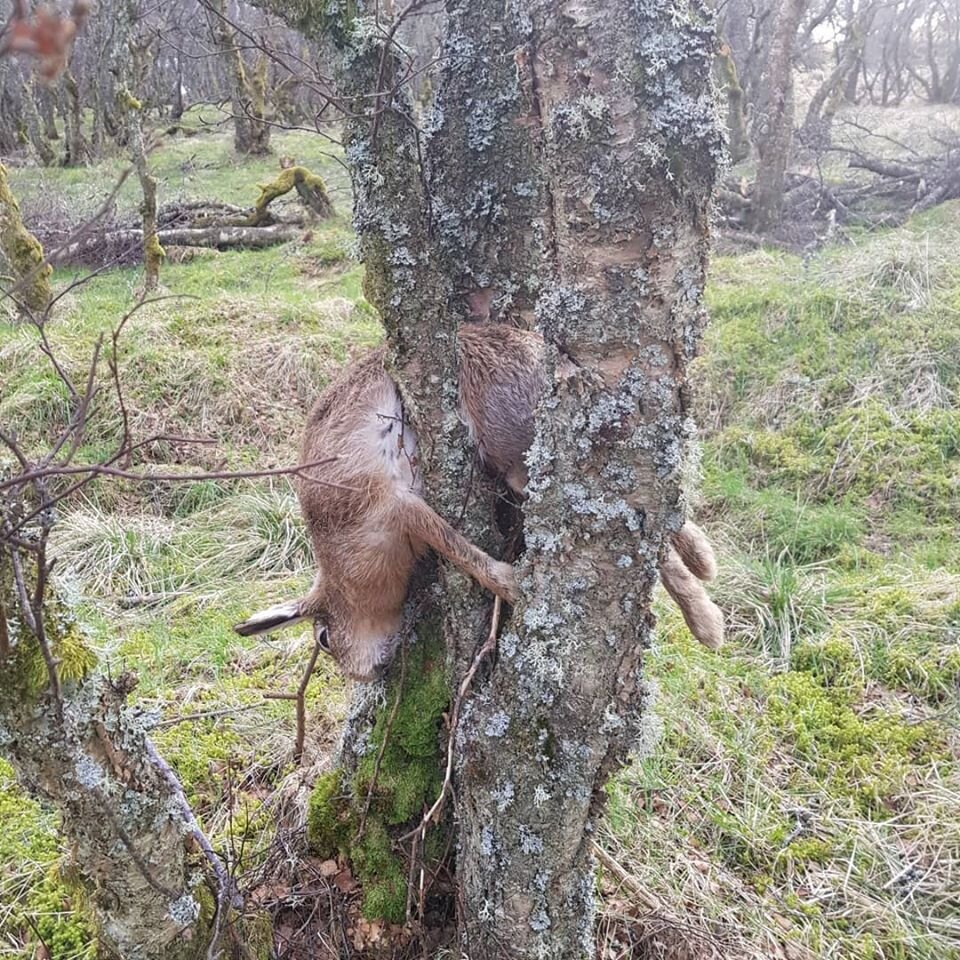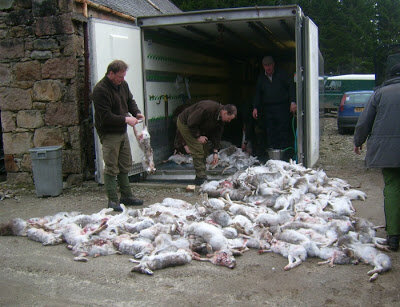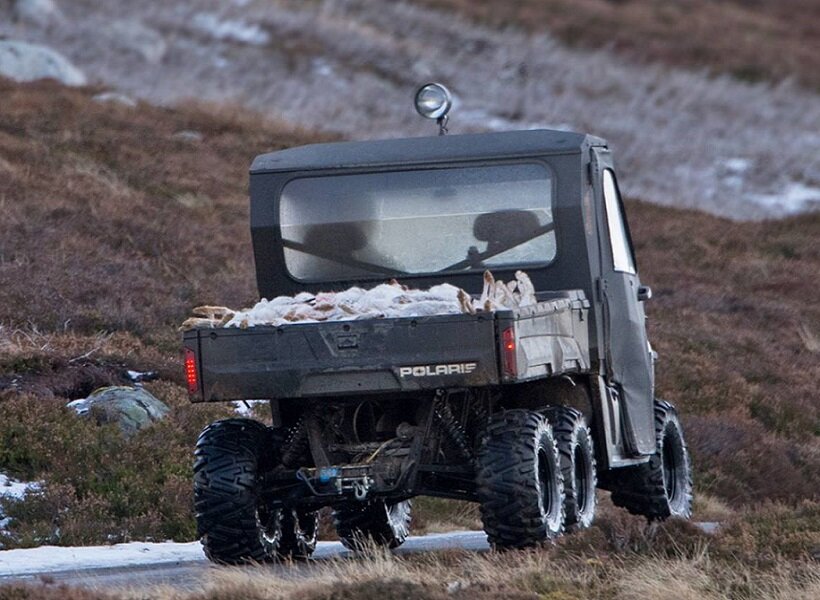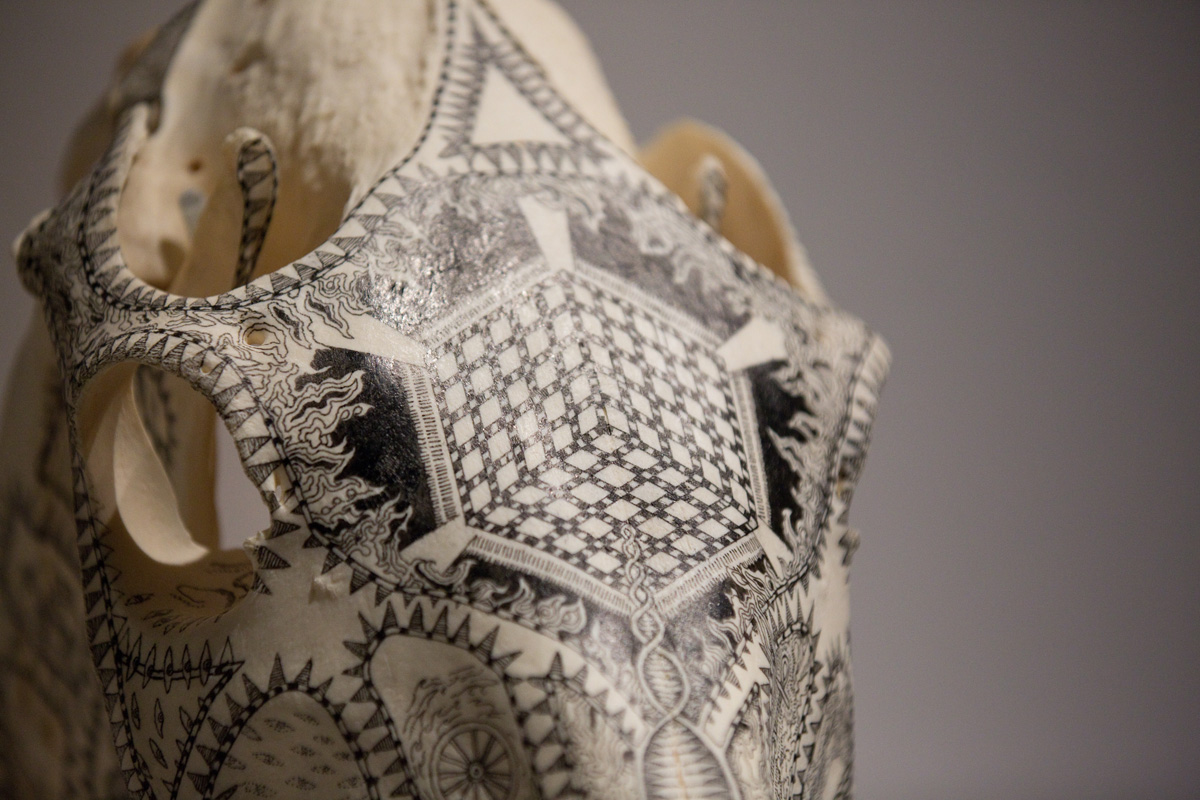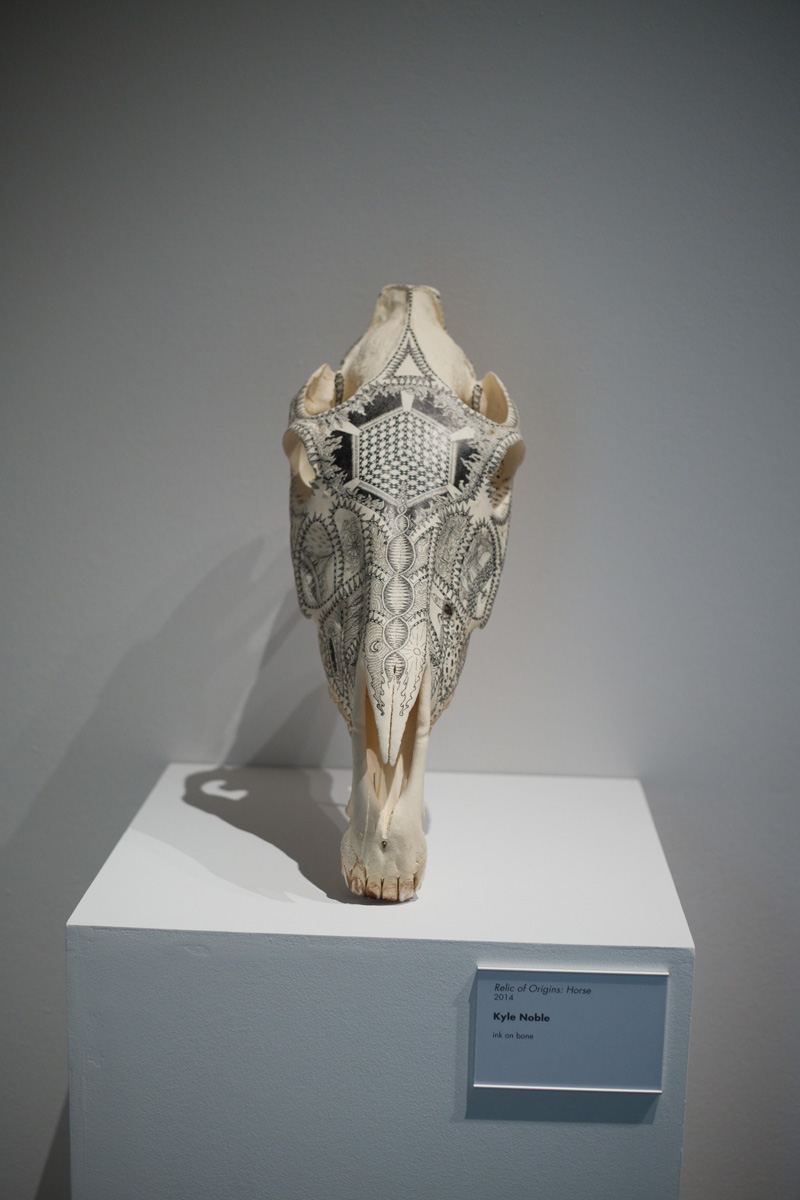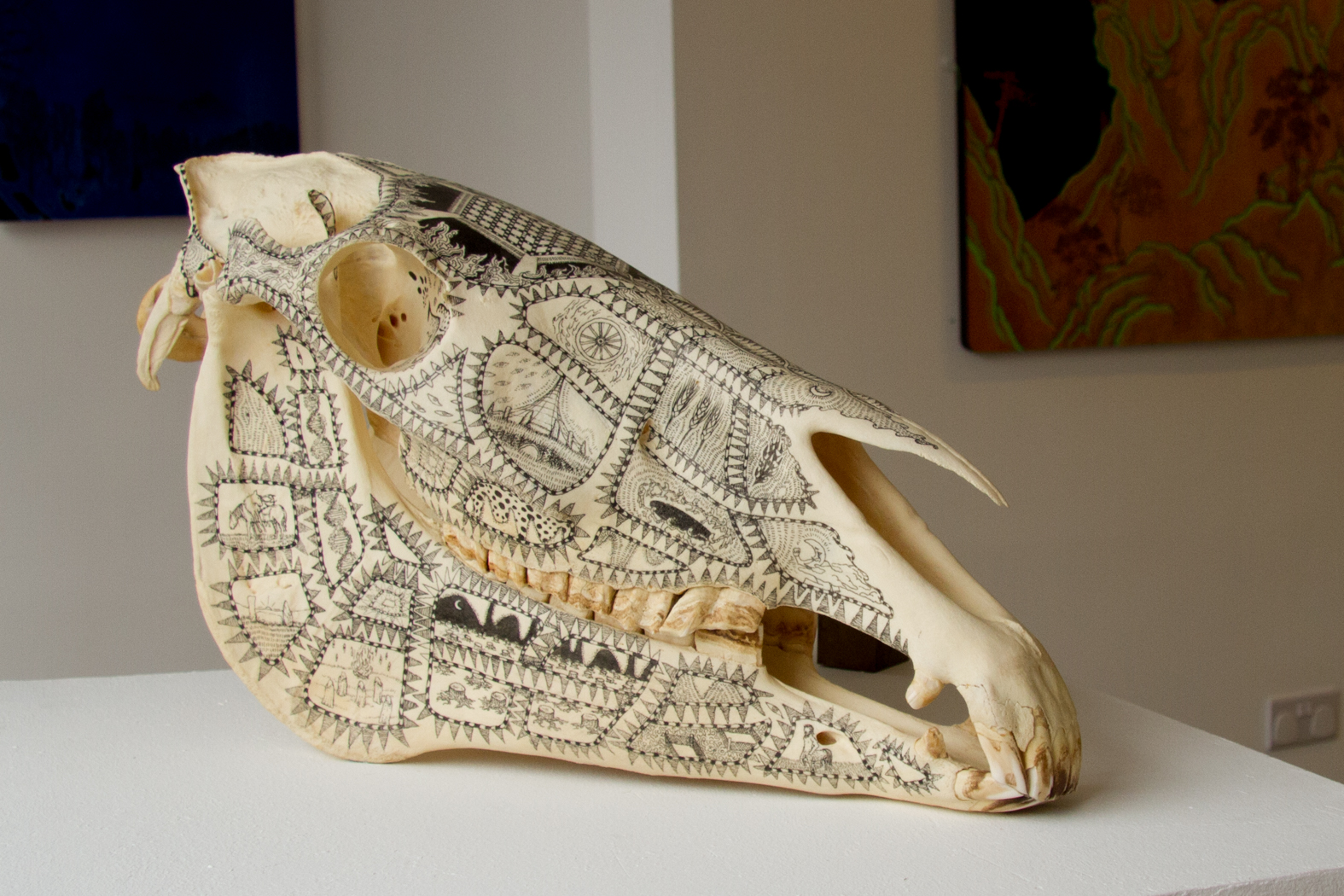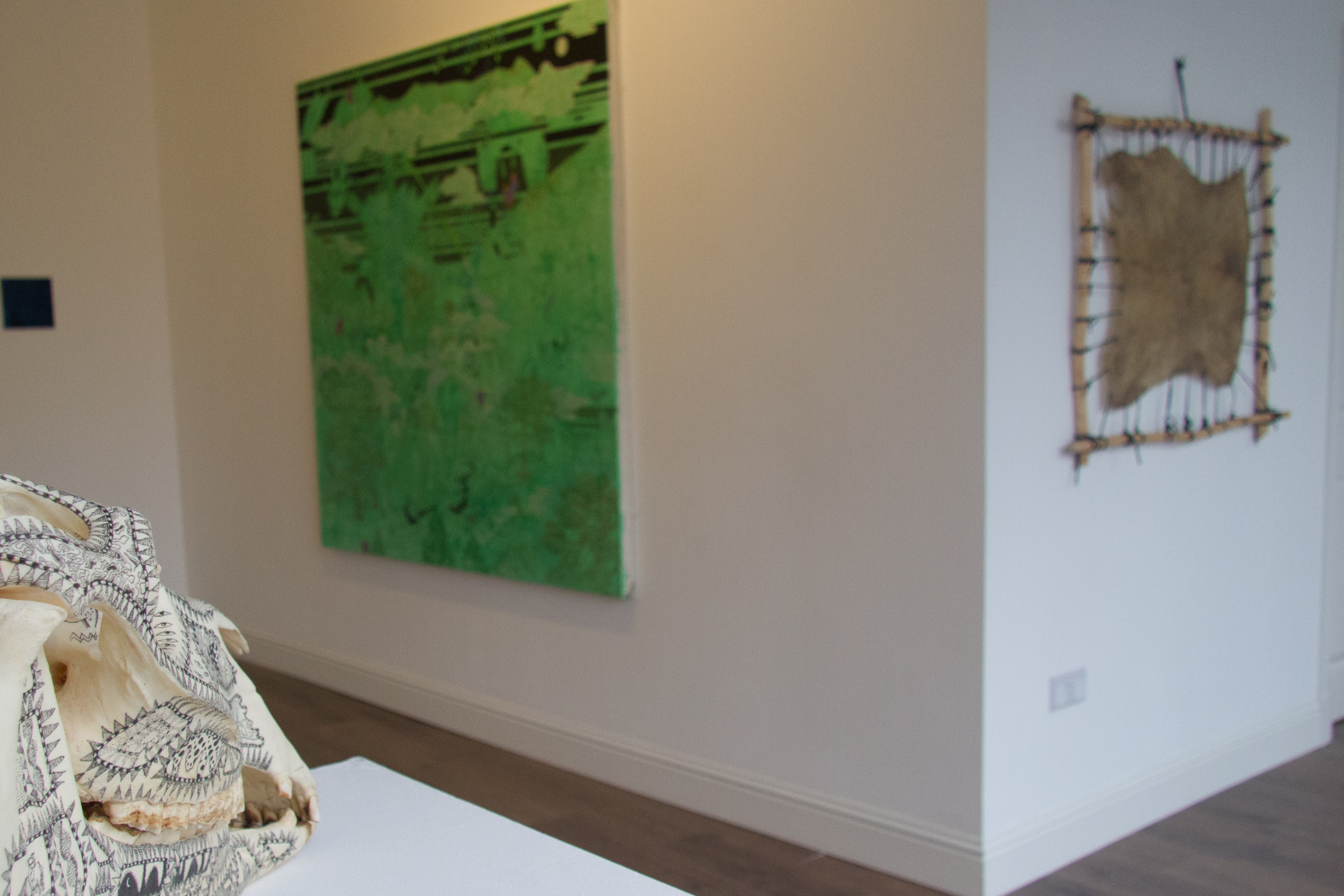Recently we had some rare moments with a few mountain hares. On a hilltop, the wind was wild, so we sheltered behind some stones for lunch. During our luncheon four hares ran very close to us and stood still almost within touching distance, apparently unaware of our presence because of the wild wind. There is a beauty and oddness to these elusive creatures.
A few months ago we found some dogs with snares around their necks, they had been caught on the entrances to a stink pit. A stink pit for anyone who is interested is a pile of dead animals with a wall of brash or sticks around it, there are small holes left to create entrances into the temple of death, these have snares over them and are aimed at trapping predators like foxes, though they are clearly indiscriminate and in this situation the traps – which clearly cause suffering- weren’t checked for over 26 hours. This macabre, lazy and elaborate process is to try and protect lambs and keep wild fox numbers down. I describe this because in this stink pit were two dead mountain hares. I have seen ‘lamping’ at night by keepers torching and chasing hares around a hill to shoot them and have wondered at the surreal vision and the odd land management reasoning… Kill wild mountain hares, to bait and kill wild foxes and other predators, to save some lambs and grouse, who will be killed a bit later on for money. Not for me thanks!
On a larger scale, I have been aware of the needless mountain hare culls around the Scottish Highlands. These are displays of mass slaughter, sacrifices for the grouse gods -before they get blown out of the sky. The reasoning for this is based on the idea that high hare numbers will somehow deplete the numbers of grouse to kill on the ecologically depleted grouse moor. There is a concern of ticks reducing grouse numbers, however hare and grouse both carry ticks so it can’t just be the hare’s fault. Why there are higher tick numbers is a good debate – my own conclusions are it might be something to do with global warming and less harsh winters. If you research the hare impacting grouse numbers topic, the evidence does not back up this odd practice.
The reason I am writing at length (if your still reading my thanks for your attention) is that tomorrow -Wednesday the 17th- the Scottish Parliament will vote on whether mountain hares can be a protected species and therefore protected from large scale culls. If this has raised your interest, research the issue and if you agree, sign the petition to show your behind the issue.
https://greens.scot/ProtectMountainHares#consultation-form
For clarity, the mountain hare does pose a threat to regenerating woodlands as do the unnaturally high population of deer – usually found on ‘sporting’ estates. In regard to regenerating woodland and ecological diversity it may be necessary to kill small localised groups of hares if fencing or tree guarding cannot be achieved. This is because we have removed or continue to persecute the natural/ wild animals who would predate these creatures and maintain a natural equilibrium.




